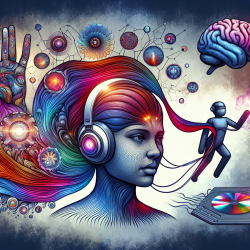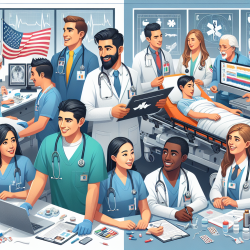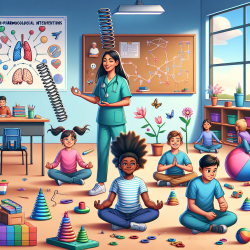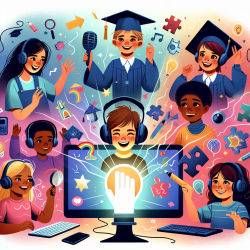Introduction
The intricate relationship between vision and audition is a subject of great interest in the field of neuroscience, particularly in understanding how sensory impairments like blindness affect these interactions. A recent study titled "Stronger responses in the visual cortex of sighted compared to blind individuals during auditory space representation" sheds light on this complex interplay, offering valuable insights for practitioners in speech-language pathology.
Research Overview
The study explores how sighted and blind individuals process auditory spatial information differently, focusing on the role of the visual cortex. It was found that sighted individuals exhibit a strong early response in the visual cortex (P70) when constructing spatial maps from auditory cues, a response that is notably absent in blind individuals. This suggests that visual experience plays a crucial role in auditory spatial processing.
Implications for Practitioners
For practitioners, these findings underscore the importance of incorporating multisensory approaches in therapy, especially for children with visual impairments. Here are some actionable insights:
- Multisensory Integration: Encourage the use of multisensory stimuli in therapy sessions. For instance, pairing auditory cues with tactile feedback can help in compensating for the lack of visual input.
- Customized Therapy Plans: Develop individualized therapy plans that consider the unique sensory processing capabilities of each child. Understanding that blind individuals may have different auditory processing pathways can guide more effective intervention strategies.
- Early Intervention: Emphasize the importance of early intervention in children with visual impairments to enhance their auditory spatial skills. This can help in mitigating the developmental delays often associated with sensory deprivation.
Encouraging Further Research
The study opens avenues for further research into how sensory experiences shape cognitive development. Practitioners are encouraged to explore the following areas:
- Longitudinal Studies: Conduct longitudinal studies to observe how early interventions in multisensory integration affect long-term outcomes in children with sensory impairments.
- Cross-Modal Training: Investigate the efficacy of cross-modal training programs that aim to enhance auditory spatial skills through non-visual means.
- Neuroplasticity: Explore the role of neuroplasticity in adapting to sensory loss and how it can be leveraged in therapeutic settings.
Conclusion
This research highlights the critical role of the visual cortex in auditory space representation and provides a foundation for enhancing therapeutic practices. By integrating these insights, practitioners can better support children in overcoming sensory processing challenges and achieving optimal developmental outcomes.
To read the original research paper, please follow this link: Stronger responses in the visual cortex of sighted compared to blind individuals during auditory space representation.










